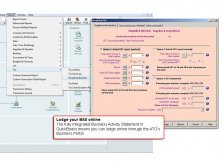QuickBooks Accountant 2010 free trial
With health care costs soaring, small businesses across the country are struggling to provide health insurance coverage for their employees. In 2009, only 46 percent of small businesses with fewer than 10 employees offered health insurance to their workers, which is down from 57 percent in 2000. Add that to the predicament that small businesses typically pay over 18 percent more in health care costs than large corporations, it’s easy to see why small businesses are caught in the middle.
Fortunately, the government cares about small businesses — just like we do. In an attempt to encourage more small businesses and small tax-exempt organizations to provide health insurance coverage for their employees, President Obama signed into law the Small Business Health Care Tax Credit as one of the provisions of the Affordable Care Act.
“The credit for small employers from 2010-2016 can be as much as 35 percent of premiums paid and 50 percent in 2014, ” says Kevin Bickerstaff, Tax Specialist at Sansiveri, Kimball & Co. What’s more, the credit limit from 2010-2016 is 25 percent and 35 percent beginning in 2014 for tax-exempt small employers.
The IRS was nice enough to send out postcards in April 2010 to millions of small business owners notifying them of this new small business health care credit, and urging them to check their eligibility. But in case you didn’t receive the postcard or check your eligibility then, here’s the lowdown of the three main qualification criteria:
- Employees – To qualify for the credit, your firm must have less than 25 full-time employees. (Having fewer than 50 “half-time” employees also qualifies).
- Average annual wages paid – A qualifying business must pay average annual wages below $50, 000.
- Insurance premiums coverage – A qualifying employer must pay at least half of the health care cost at the employee-only (single) coverage rate.







